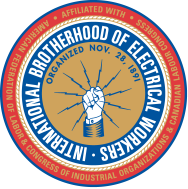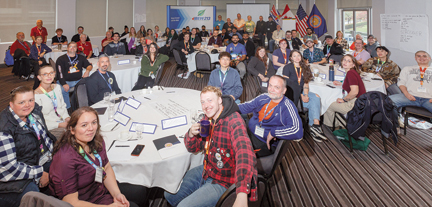The most important moment in improving the lives of working people is when they realize their own power. The challenge for the labor movement is creating that moment at scale.
Vancouver, British Columbia, Local 213 has quietly put together a model to do that, and every local ought to seriously consider something like it for themselves, said First District International Vice President Russ Shewchuk.
For the last six years, Local 213 sponsors 100 to 130 of its more than 6,000 members from across its vast jurisdiction to come to Vancouver for what Business Manager Jim Lofty calls an “education festival.”
“The content in their classes is very good, but it is also taught at many locals all the time,” he said. “What’s different is the scale, the time spent, the support for the members and the ambition of it, almost like a revival meeting for labor.”
When registration opens each year, anyone can sign up if they are a member, whether for 30 years or 30 minutes.
Lofty accepts that this is not cheap. But there are advantages to the festival model.
“It isn’t free to send our reps out to the far corners of the jurisdiction, either,” he said. “There are network effects doing it this way that you don’t get running a quarterly education program at the hall. It is eye-opening for many members and drives their engagement.”
Local 213 Education Director Scott Ashton plans the conference — Lofty calls it Ashton’s baby — and for the last several years it has run four separate courses.
Together, Shewchuk said, these courses are “like a new-member orientation on steroids.”
The program kicks off with a keynote speaker — this year it was Shewchuk — and then everyone heads to their course.
There is a mental health and first aid course certified by the Mental Health Commission of Canada, though Ashton said most of the government materials were targeted at office workers. Local 213 Assistant Business Manager Christina Brock created a customized course for industrial and construction workplaces.
Former Local 213 Business Manager Adam Van Steinburg, now a First District international representative, teaches a class on grassroots organizing with fellow International Representative Jim Watson.
The last two courses, Ashton said, are actually more like a circuit, a cluster of wide-ranging sessions.
The first is the member education circuit. There is room for sessions on the structure of Local 213, understanding collective bargaining agreements, employment law and activism, and company policies and workplace rights.
“You start off with someone who wants to dip in their toe, and the curtain is pulled back and they see how big the IBEW is and that they are a part of it,” Lofty said. “Before you know it, there are two or three people joining committees.”
Finally, there is a stewards’ circuit with three sessions: the first on grievances, the second on investigations and an entire session on note-taking.
“That is the most requested one I have. It is also the hardest one because I have never seen anyone teach that,” Ashton said.
There is no limit to how many times you can attend or which track you have to follow. One member, Ashton said, takes the steward course year after year.
“There are a lot of members who just want to be in the IBEW and want someone else to carry the mail. They don’t complain, they pay dues. That’s fine, we need them. But we need more ways for people to find mentors, to find community, to find their own power,” Shewchuk said.




